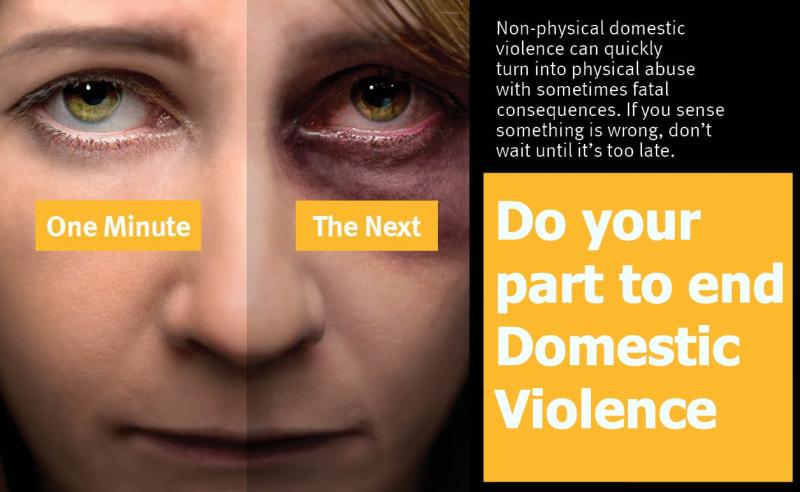Overview of Intimate Partner Violence [aka domestic violence)



Violence by an intimate partner is linked to both immediate and long-term health, social, and economic consequences. Factors at all levels — individual, relationship, community, and societal — contribute to intimate partner violence. This type of violence can occur among heterosexual or same-sex couples.
Preventing intimate partner violence requires reaching a clear understanding of those factors, coordinating resources, and fostering and initiating change in individuals, families, and society.
Types of Intimate Partner Violence
NIJ has often partnered with the Centers for Disease Control and Prevention (CDC) on the issue of violence against women, in particular by cosponsoring the National Violence Against Women Survey (NVAWS). The CDC's National Center for Injury Prevention and Control , which spotlights injury and violence prevention topics, defines four main types of intimate partner violence: [1]
- Physical violence is the intentional use of physical force (e.g., shoving, choking, shaking, slapping, punching, burning, or use of a weapon, restraints, or one's size and strength against another person) with the potential for causing death, disability, injury, or physical harm.
- Sexual violence can be divided into three categories: (1) the use of physical force to compel a person to engage in a sexual act unwillingly, whether or not the act is completed; (2) an attempted or completed sexual act involving a person who, because of illness, disability, or the influence of alcohol or other drugs, or because of intimidation or pressure, is unable to understand the nature or condition of the act, decline participation, or communicate unwillingness to engage in the act; and (3) abusive sexual contact.
- Threats of physical or sexual violence communicate the intent to cause death, disability, injury, or physical harm through the use of words, gestures, or weapons.
- Psychological/emotional violence traumatizes the victim by acts, threats of acts, or coercive tactics (e.g., humiliating the victim, controlling what the victim can and cannot do, withholding information, isolating the victim from friends and family, denying access to money or other basic resources). In most cases, emotional violence has been preceded by acts or threats of physical or sexual violence.
Stalking is often included among types of intimate partner violence. Stalking generally refers to harassing or threatening behavior that an individual engages in repeatedly, such as sending the victim unwanted presents, following or laying in wait for the victim, damaging or threatening to damage the victim's property, appearing at a victim's home or place of business, defaming the victim's character or spreading rumors, or harassing the victim via the Internet by posting personal information. [2] As with perpetrators of physical and sexual violence, stalkers may be motivated by a desire to exert control over their victims. Stalking and intimate partner violence may co-occur.
Learn more about stalking from NIJ's Stalking Web page.



Feminists have long addressed the issue of domestic violence. Few people know the prohibition movement was anchored in domestic violence. At that time, it was believed men beat their wives because they were drunk. Of course, that wasn't true. Sober men batter their wives too.
The second wave of feminists began working on changing the laws concerning male violence inflicted upon women. One of the first changes they managed to get through were laws about domestic violence. However, the police refused to enforce those laws. In the 1960s, NOW sued the LAPD and won because of that reality. The LAPD was forced to respond because of that lawsuit. That was just one of meny lawsuits that were won on behalf of battered women.
By the 1970s, feminists first began speaking out in force. They changed the discussion by coining the term "domestic violence". That change alone drew attention to what has been a centuries old viciousness inflicted upon women by men who claim to love them.
At that time, seven American women were being slaughtered every single day by their intimate partners. By the 1990s, that number dropped to three per day, still horrendous but proving thousands of women's lives were saved by feminists who continued to educate the public by speaking out about it and refusing to let there be silence about it.
Since the idiot in the WH was elected, that number has gone back up to four per day -- a huge tragedy we should all be mourning but no one is talking about it. Silence from the WH is helping those who want to harm women as did the fact that millions of people voted for a man they knew was a sexual predator.
Please keep this in mind when you vote in 2020. Your vote has consequences.